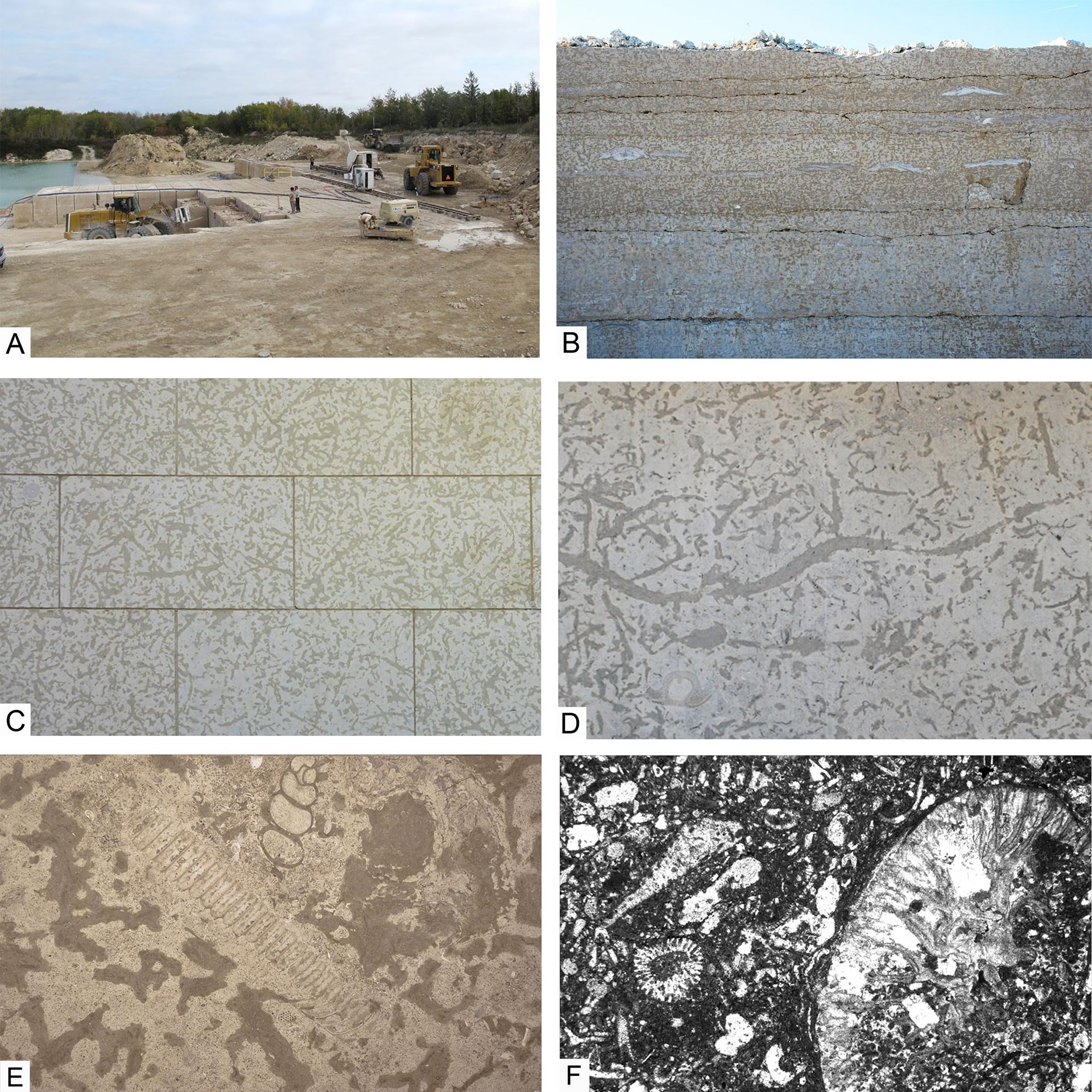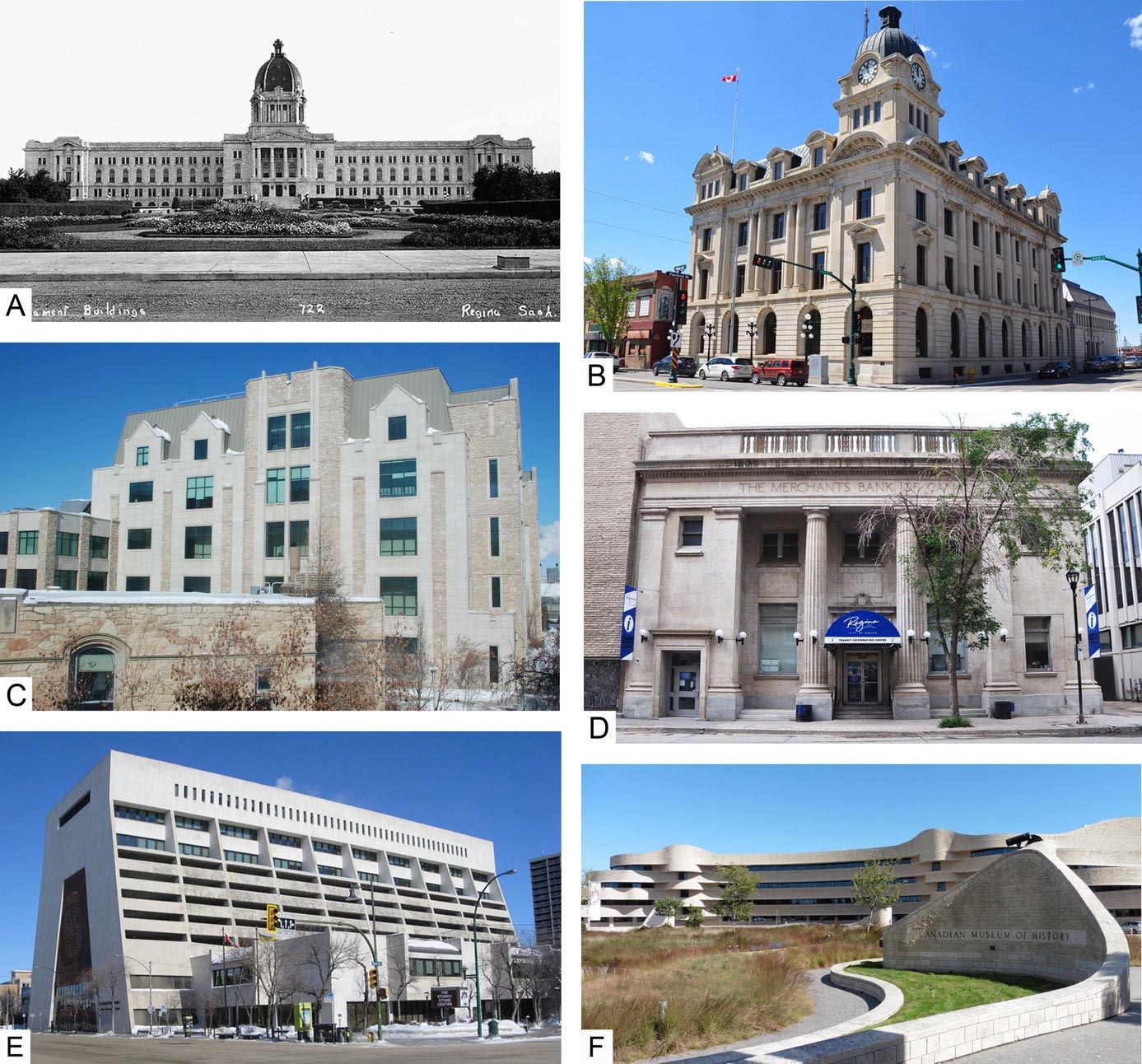
Tyndall Stone lithology. A. Quarry in Garson, Manitoba. B. Sawn quarry wall showing dolomite mottles and cross-sections of stromatoporoids. C. Wall with slabs showing dolomite mottles (darker coloured). D. Wall with dolomite mottles, some of which are curvilinear and represent dolomitized horizontal burrows. E. Polished slab with cephalopod siphuncle, snail and dolomite mottles. F. This section photomicrograph of bioclastic packstone (biomicrite) with edge of rugose coral and small bioclasts including calcareous green algae.
Year designation
Lithology
Aesthetics
Geological settings
Paleozoic – Ordovician – Red River Formation – Selkirk Member
Location
NE Winnipeg, Manitoba
Tyndall Stone lithology. A. Quarry in Garson, Manitoba. B. Sawn quarry wall showing dolomite mottles and cross-sections of stromatoporoids. C. Wall with slabs showing dolomite mottles (darker coloured). D. Wall with dolomite mottles, some of which are curvilinear and represent dolomitized horizontal burrows. E. Polished slab with cephalopod siphuncle, snail and dolomite mottles. F. This section photomicrograph of bioclastic packstone (biomicrite) with edge of rugose coral and small bioclasts including calcareous green algae.
The stone from Manitoba
Iconic buildings using Tyndall Stone include the legislative buildings of Saskatchewan and Manitoba, the interior of Centre Block, House of Commons in Ottawa, the Canadian Museum of History and the Canadian Museum for Human Rights in Gatineau, Quebec and Winnipeg, respectively, the Bessborough Hotel and the Sturdy Stone Building in Saskatoon, post offices, numerous university buildings especially in the prairie provinces, the façades of older bank buildings commonly with columns, and railway stations and department stores in the downtown areas of prairie cities. Tyndall Stone has been used for several buildings in the U.S.A. and for Canada House, which houses the Embassy of Canada in Germany, in Berlin (2005).
Buildings using Tyndall Stone. A. Saskatchewan legislature, Regina. B. Post office, Moose Jaw, Saskatchewan. C. Part of chemistry building, University of Saskatchewan, Saskatoon, Saskatchewan. D. Bank building, Regina. E. Sturdy Stone Building, Saskatoon. F. Canadian Museum of History, Gatineau, Quebec (near Ottawa, Ontario).
- Main publication
- Author(s)
Brian Pratt

